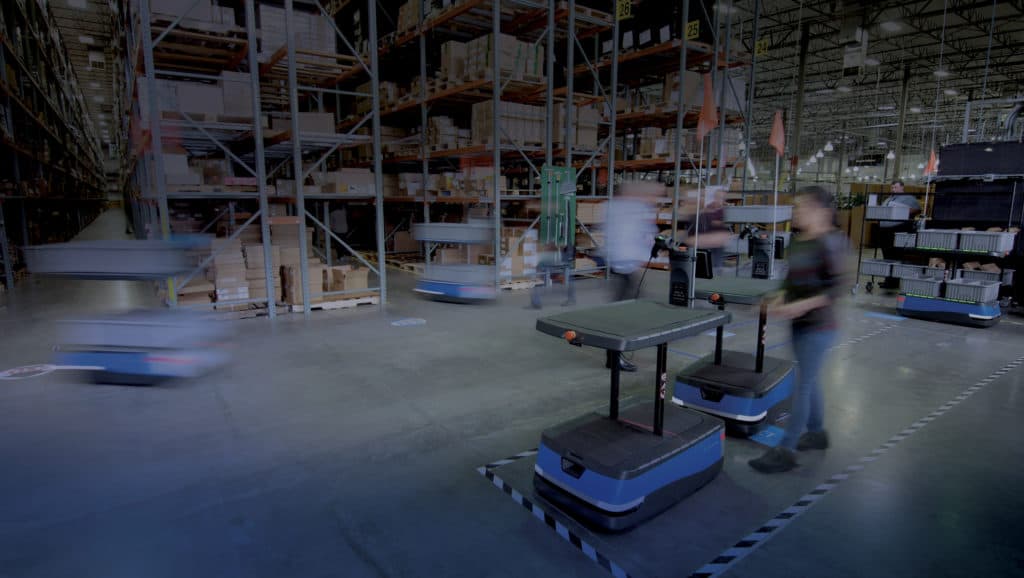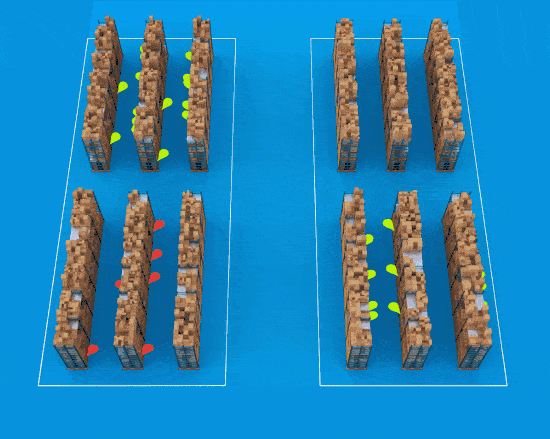These days, warehouse managers have a myriad of options available when it comes to selecting the order picking approach that best fits their fulfillment needs. Efficient planners can opt for a combination of the most prevalent picking trends, from discrete order picking to zone picking to cluster picking to voice picking. But, with all of these options available, it’s important that the ever-efficient batch picking option doesn’t fall by the wayside. 
Batch picking might not be the most technologically-advanced order picking strategy available, but it is a reliable one that all sizes of warehouses still use today.
Definition and meaning of batch picking
What is batching? Batching, or batch picking, referred to by some operators as multi-order picking, is an order picking protocol that calls for the picker to compile a batch of orders by SKU, one SKU at a time. In its most traditional application, orders with multiple picking tickets are combined and split later, before the packing process.
How batch picking works
The key thing to remember about batch picking is this — it allows pickers to pick multiple items from multiple orders at the same time. When done correctly, this optimizes efficiency and allows pickers more defined routes throughout the warehouse, without the need to trace back and forth through the aisles to pick items later.
Batch picking and the OMS
In a batch picking approach, the order management system (OMS) groups together orders with the same pick requirements to significantly reduce pick tasks and, therefore, the walking needed to fulfill those orders.
Single-unit and single-line-multi-unit orders are two order profiles which benefit significantly from batch picking and with a straightforward implementation.
Benefits of batch picking
In the OMS batch process, orders which require the same SKU are combined into a single pick task so that the location is visited once rather than one time per order. If 10 orders all require the same SKU and are batched together, the location is visited one time rather than 10 times.
The total units required are typically picked into one, large tote. The units are then allocated to individual orders as part of the packout process. Since all units are of the same SKU, there is no confusion as to which units belong to which order.
If single-line-multi-unit orders are being batched, then the packout associate simply needs to be informed of the quantity of units to allocate to each outgoing order. If only single-unit orders are being batched, then it’s very straightforward; one unit is allocated to each outgoing order.

Reduced travel time on the warehouse floor
Any productivity-minded warehouse manager knows that one of the biggest time losses that can occur on the floor is travel time, whether it be on the part of humans, autonomous robots or a combination of the two. Reductions in travel time positively impacts productivity and picked units per hour (UPH). 6 River System’s patented, directed workflow calculates the optimal pick path and directs the picker through the warehouse, thus further ensuring that travel time is minimized.
Picking shifts are more optimized
Because batch picking usually entails order profiles that have just a few SKUs, all orders should be able to be picked and packed for shipping within one order scheduling window per shift. This allows your business to fulfill large batches of items at a time; and the most critical can be scheduled first, depending on your fulfillment needs and promises.
Batch picking makes for confident employees
Sure, with batch picking, your pickers may not be getting as much exercise as they used to when they routinely sprinted across the warehouse floor, often revisiting the same location multiple times. But, because pickers are meant to stay on one SKU at a time, the training is generally much easier and more straightforward than other picking strategies that force the picker to learn the layout of the entire warehouse.
Naturally, not every warehouse or company is best-equipped for batch picking. Make sure that you assess all other order picking strategies and systems before you commit to one.


